Chinese paper currency features images of some popular travel destinations.
In late 2017 I realized that I had been to all the places depicted on the current bills, except the “Three Gorges” of the Yangtze (Changjang 长江) river.
So, I thought, why not “follow the money”, and add a cruise through the Three Gorges during my 2018 trip to China! So I did!
As a preparation to posts about my 2018 adventures, here is a review of China’s one yuan to 100 yuan notes, and photos from my visits to the scenic spots shown:
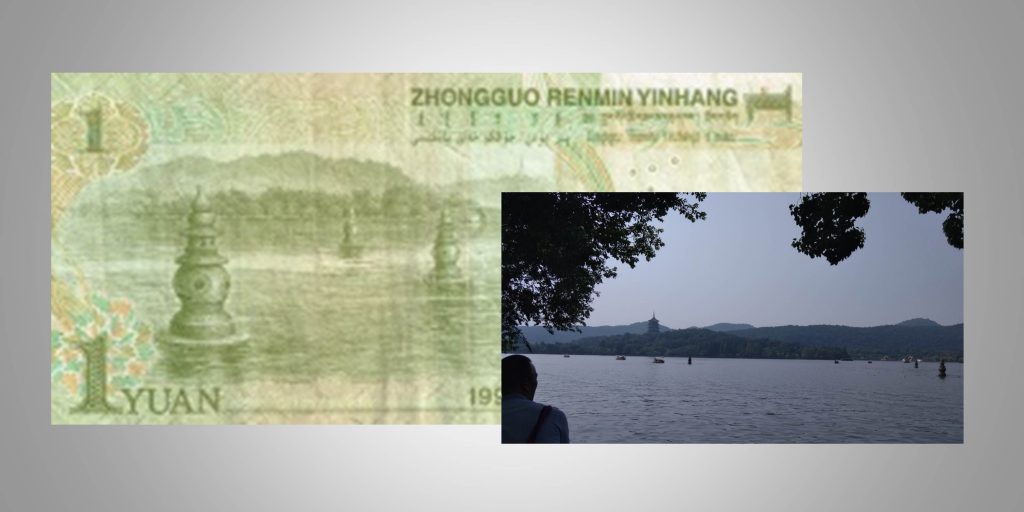
(Hangzhou: Visited in 2017)
Hangzhou is a beautiful city in Zhejiang province on the east coast of China. One of the most famous attractions of the city is West Lake. The one yuan note has a close-up view of the three stone pagodas on the lake. Here is a description from visithangzhou.com:
“There are four beautiful islands in West Lake and the largest one of called named Three Pools or The Lesser Yingzhou Isle. The isle itself is a man made landscape from 1607 and its beauty is almost beyond imagination. The delightfulness and richness of gardening and harmony is astonishing. The islet itself has a minor lake so it’s an islet in a lake with a lake you are entering when here…
At the southern part on the island, rising from the water, there are three 2-meters high and hollow stone pagodas from the late 11th century. On a full moon night people can row out to the pagodas, place a candle in the stone and a light will come out of the five equally spaced windows reflecting the moon into the water and making it look like there were several magic moons in the water.”
Additional information can be seen at:
China Daily
Justgola
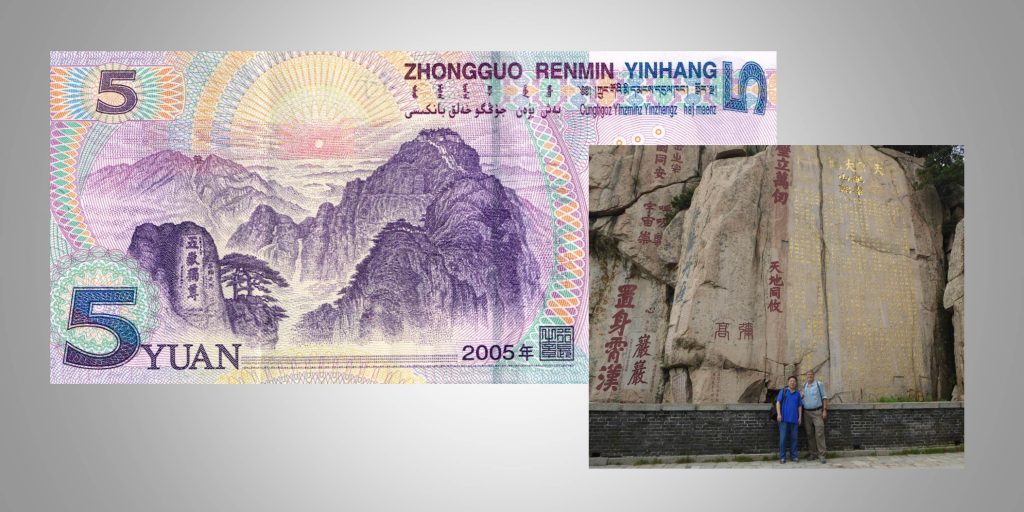
(Taishan: Visited in 2017)
(No my friends, contrary to the assumption of many in the XJTU program, the image is NOT Huashan!)
Taishan (Mount Tai) is located in Shandong province near the city of Jinan.
Of China’s “Five Sacred Mountain”, Taishan is considered the most important. Ascending the mountain was a ritual for Chinese emperors. Located in eastern China, from its heights they say you get the first view in China of the sun’s rays at dawn.
On a visit to Jinan, my friend (and calligraphy teacher) Xu Gang was kind enough to accompany me to the top of the mountain. The mountain has been the scene of pilgrimages by Confucius, Laozi (Lao Tze), many Chinese Emperors, and even Mao Zedong.
Information on the UNESCO site
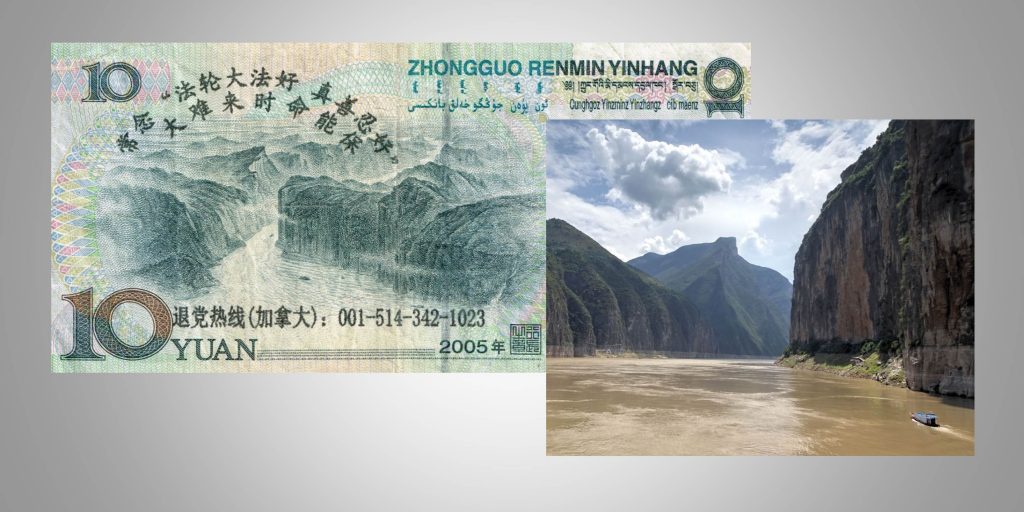
(Three Gorges: Visited in 2018)
Spectacular scenery of the mighty Yangtze (Chiangjiang) river. The region’s water level rose with the completion of the Three Gorges Dam. Leisurely cruises either upriver or downriver provide an opportunity to enjoy beautiful views and to pass through history. With my friend Marlene Miyamoto, I was a passenger on the “Victoria Selina”, embarking in Chongqing. The trip ended with a visit to the impressive Three Gorges Dam and a drop-off point of Yichang. Along the way we visited interesting historic sites, some connected with the Three Kingdoms period of Chinese history.
Three Gorges of the Yangtze on Wikipedia
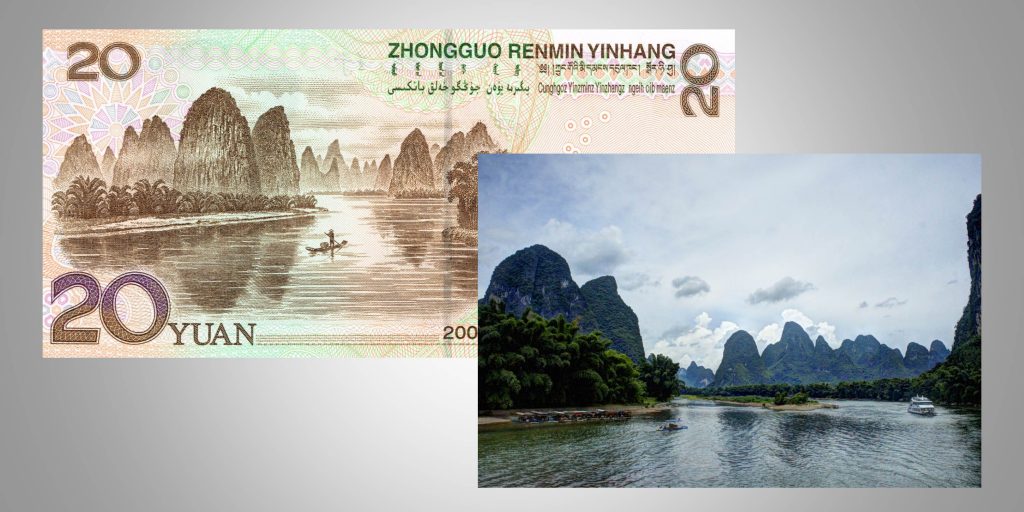
(Li River: Visited in 2015)
Famous sections of the Li River lie between Guilin and Yangshou in Guangxi province. The scenery is beautiful whether you travel on the river in a small boat or a cruise ship. You pass small villages, and see stunning karst mountains. Highly recommended! Also, from Guilin you can visit picturesque agricultural areas and traditional towns of China’s ethnic minorities. In 2018 I returned to see the Longsheng/Longji rice terraces and the Dong community in Changyang.
Information about the Li River in Wikipedia
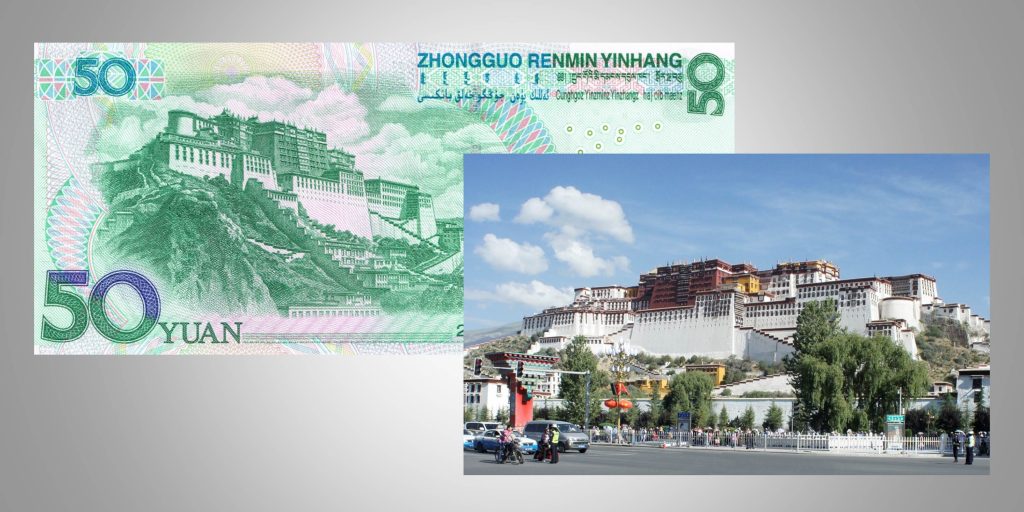
(Lhasa: Visited in 2015)
The Potala Palace is an imposing landmark. It is said that it so inspired the American architect Frank Lloyd Wright, that he kept a photograph of it in his study.
The inside of the building is filled with incredible treasures of sacred Buddhist artwork. I was stunned that so much had survived the destructive “Cultural Revolution” (1966 – 1976).
UNESCO information about the Potala and other landmarks in Lhasa
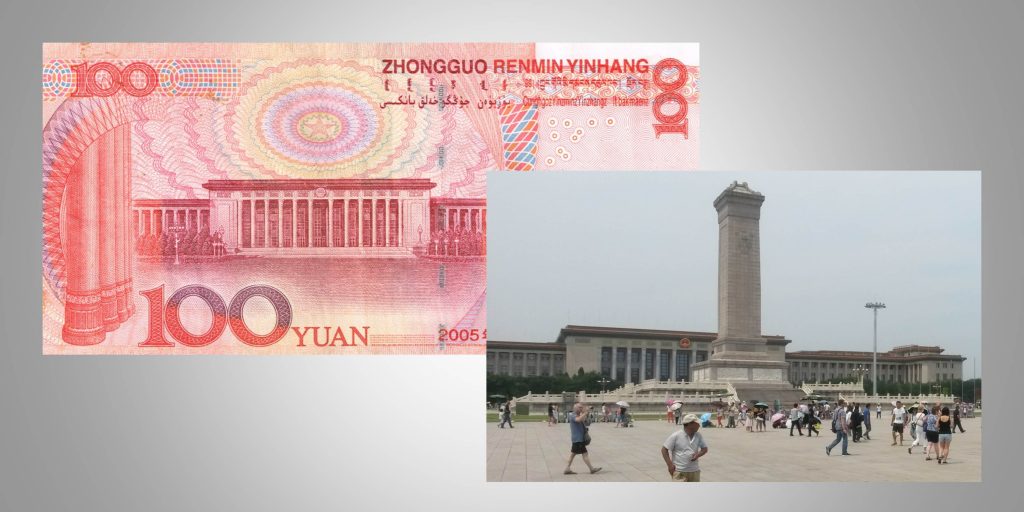
(Beijing: visited in 2015 and 2018)
The Great Hall of the People stands on the west side of Tianamen Square. I must confess that on both my visits to Beijing, I was more focused on the Forbidden City than on the landmark shown on the 100 yuan note. There is a lot so see in Beijing. Maybe I will have to visit again!
